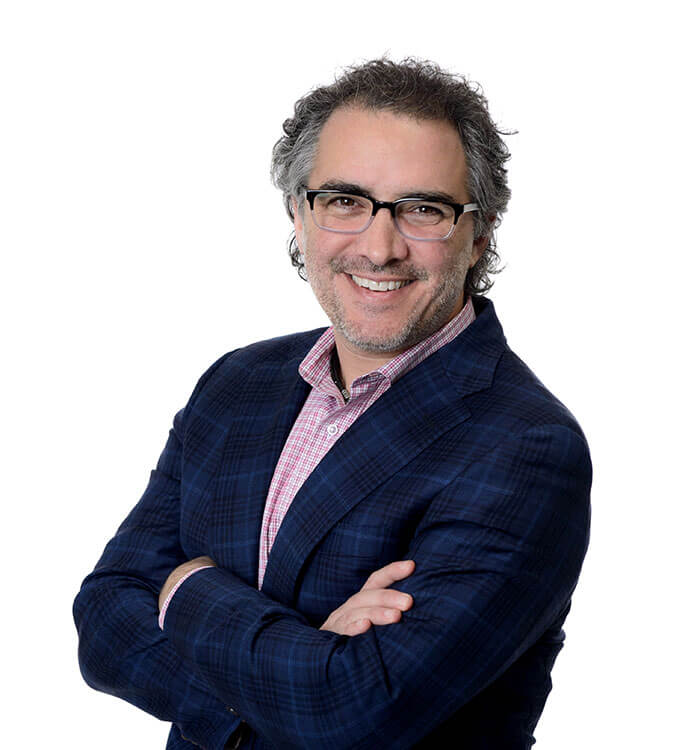The State of the Department Providing Innovative Care for Urology Patients
October 25, 2018
New expertise, therapies expand options for treatment
UH Innovations in Urology - Fall 2018
 Lee Ponsky, MD
Lee Ponsky, MDIt’s an exciting time to be in urology at University Hospitals, says Lee Ponsky, MD, Interim Chairman of the Department of Urology at University Hospitals Cleveland Medical Center.
NEW PHYSICIANS
First, UH has added three new faculty members.
- Jason Jankowski, MD, a former resident who is fellowship trained in oncology and robotic surgery, now heads up robotic surgery at University Hospitals St. John Medical Center, a Catholic hospital, and is seeing patients at UH St. John Medical and UH Cleveland Medical Center.
- Aram Loeb, MD, is fellowship trained in men’s health with advanced expertise in erectile dysfunction. He is now seeing patients at University Hospitals Parma Medical Center and at the Cedar/Brainard Urology office.
- Adam Klein, MD, recently completed his residency in urology with expertise in general urology. He practices at UH St. John Medical Center.
Read more about these new physicians in the Physician Profile articles for Dr. Jankowski, Dr. Loeb and Dr. Klein.
ALTERNATIVE CLINICAL SOLUTIONS
Members of the Department of Urology are playing key roles in the use of innovative new procedures.
UroLift. Irina Jaeger, MD, has become a national leader in the UroLift procedure, Dr. Ponsky reports. UroLift is a minimally invasive technique to treat blockages in the urethra due to benign prostatic hyperplasia (BPH) with minimal associated with surgery or medication. Both Dr. Jaeger and Dr. Klein offer UroLift in greater Cleveland, Ohio.
HoLEP. Ehud Gnessin, MD, is fellowship trained and is currently the only urologist in the region offering minimally invasive Holmium Laser Enucleation of the Prostate (HoLEP) to treat an enlarged prostate. The treatment uses laser enucleation to remove an obstruction in the prostate while preserving healthy tissue.
“Dr. Gnessin is also an international expert in stone disease and manages some of the most complex stone patients, offering the latest and most innovative approaches,” Dr. Ponsky says.
PROSTATE CANCER INNOVATIONS
Active surveillance. “Active surveillance of prostate cancer is growing in popularity and utilization,” Dr. Ponsky says. “We now have data to support the fact that there are certain types of very low-risk cancers that can be monitored closely.”
New technologies help clinicians appropriately identify which patients are good candidates for active surveillance. These patients only need intervention if their cancer looks like it’s getting more active and they are still candidates for achieving a cure. In fact, studies show that more than 50 percent of patients with very low-risk prostate cancers can be followed for more than 15 years without treatment, Dr. Ponsky notes.
Improved diagnostics. UH offers a unique and robust prostate biopsy program: an MRI-based biopsy to identify and target lesions.
“With the current standard of care, the prostate is biopsied without seeing a target,” Dr. Ponsky explains. “In fact, the prostate is the only organ that many doctors sample without a target.”
Since 2014, he says, nearly all UH Urology Institute patients have received an MRI to identify areas of abnormality before biopsy or at the same time as the biopsy.
“In a number of patients, we’re able find cancer that was never detected on a previous, standard biopsy,” Dr. Ponsky says. “It’s pretty exciting.”
ADVANCING UROLOGIC RESEARCH
In addition to providing outstanding patient care, UH urology clinicians published 54 abstracts and journal articles last year, and several practitioners have received new research grants.
Adonis Hijaz, MD, recently received a National Institutes of Health (NIH) R21 grant. “Dr. Hijaz is developing an absorbable, autologous collagen mesh for patients with incontinence,” Dr. Ponsky says. “It’s not yet available clinically, but it’s extremely innovative and exciting.”
Dr. Hijaz was also recently appointed Vice Chair of Academics and Research, Dr. Ponsky adds. “He’s coordinating all of our research and ensuring we’re growing our contribution to the academic urology community.”
Dr. Ponsky – along with Vikas Gulani, MD, PhD and Anant Madabhushi, PhD – is the recipient of an NIH R01 grant for MRI in prostate cancer evaluation. This is an effort to move toward “virtual biopsy,” he says.
“We’re hoping to use MRI to evaluate and diagnose prostate cancer, and then tailor appropriate therapy based on the MRI findings,” Dr. Ponsky notes. “We’re also offering same-day diagnostic MRI. In fact, UH is one of the only places in the world where patients can have a prostate MRI and biopsy and get their results the same day, a process that typically takes two to three months.”
And, finally Magdalena M. Grabowska, PhD and Sanjay Gupta, PhD, researchers at Case Western Reserve University School of Medicine and the Department of Urology, received funding to work on a variety of innovative cancer diagnostics and therapeutics with the hope of eventually bringing these innovations to the bedside to treat patients.
To refer a patient to the UH Urology Institute call 216-844-3009 or contact Dr. Ponsky at Lee.Ponsky@UHhospitals.org.


